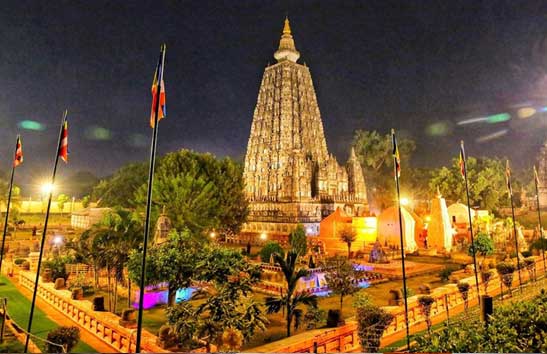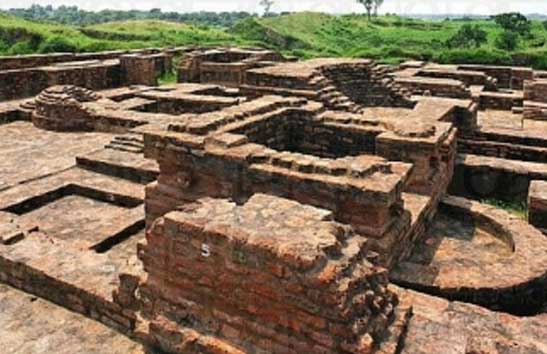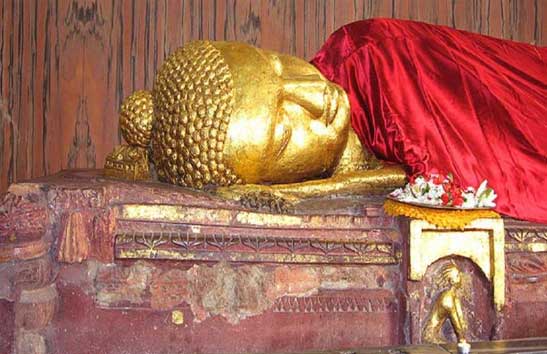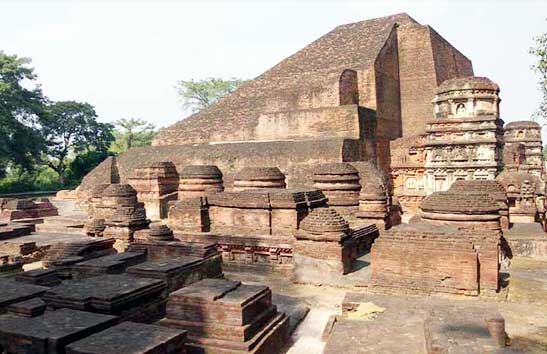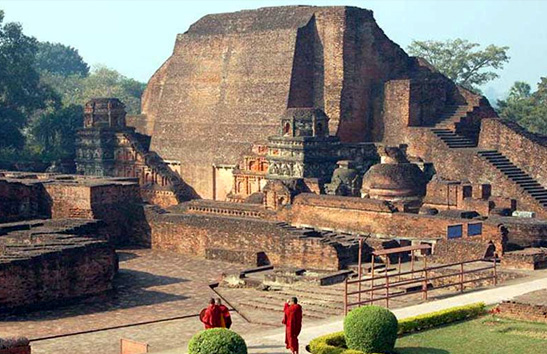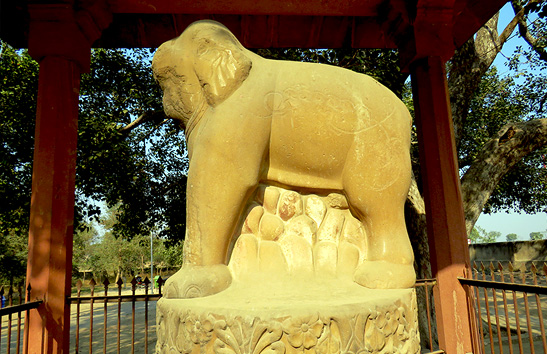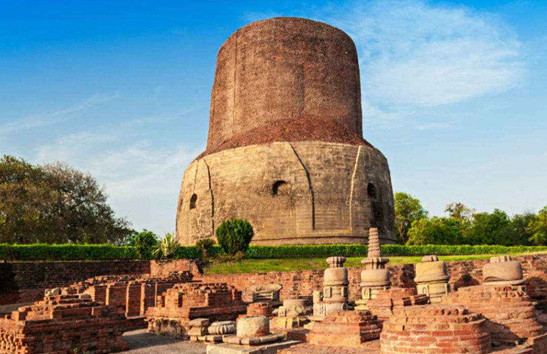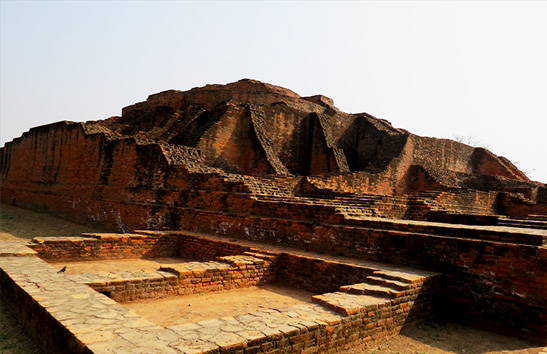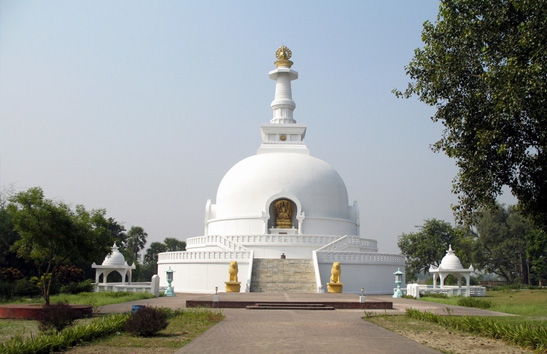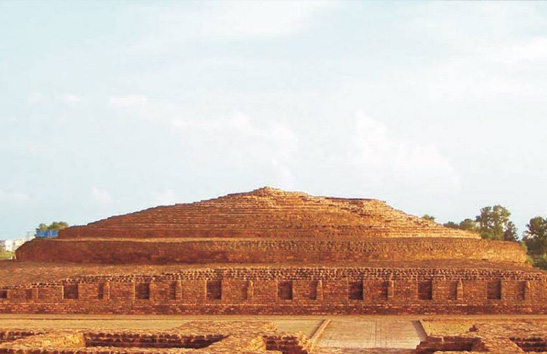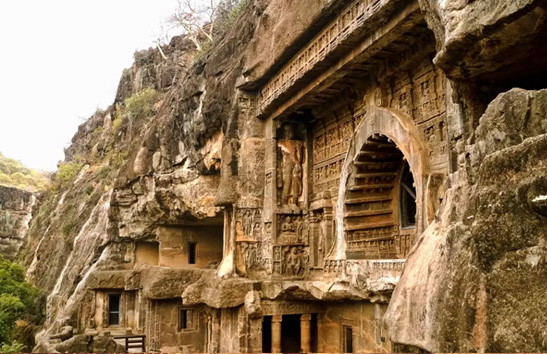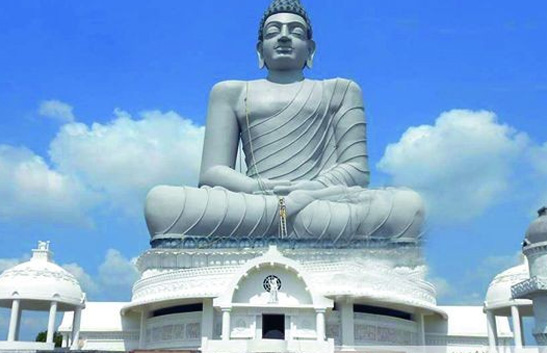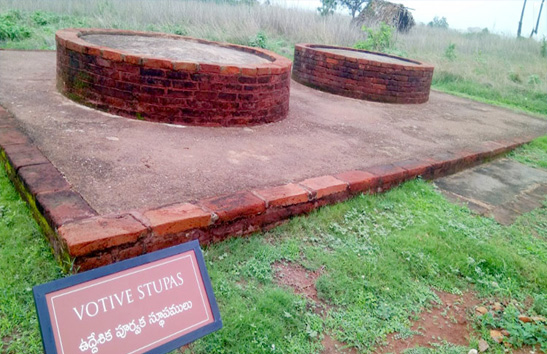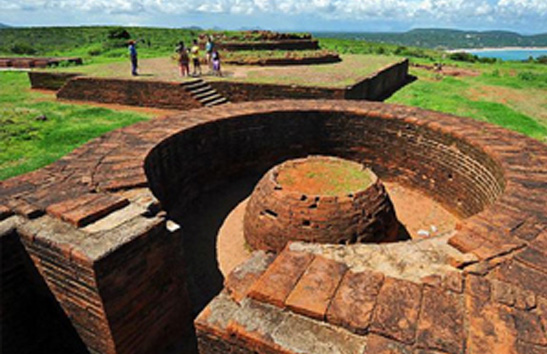Rajgir
The place where Buddha subdued Nalagiri, the charging elephant
- Country : India
- State : Bihar
- Language :Magadhi and Hindi
- Location :74 kilometers from Bodhgaya
- Best time to visit :October to March
- Tourist places to visit :Griddhakuta (Vulture’s Peak), Bimbisar jail, Venuvana Kalandakanivapa, Cyclopean Wall , Rajgir Dance Festival , Pippala Cave, Vishwa Shanti Stupa
- Significance :Lord Buddha spent 12 years in Rajgir.
- Nearby Tourist Places :Sarnath , Kushinagar , Bodhgaya, Rajgir , Nalanda , Vaishali , Kesaria ,Lauria Nandangarh etc.
- Festivals to visit :Rajgir Dance Festival
Rajgir is one of the most important Buddhist pilgrimage sites. This is the place where Buddha subdued Nalagiri, the charging elephant, which is counted as one of the major miracles of Buddha.
Rajgir is situated in the Indian state of Bihar around 70 km from Bodhgaya and around 100 km from the state capital Patna. The ancient name of Rajgir was Rajgaha which literally means the abode of kings. During Buddha’s lifetime, the kingdom of Magadha was ruled by King Bimbisar who was succeeded by King Ajatasatru and both were prominent followers of Buddha.
When Siddhartha left Kapilvastu in search of enlightenment, he passed Rajgaha on his way to Uruvela. King Bimbisar of Rajgaha was very impressed with Siddhartha and offered to share the kingdom with him, which he declined but promised to visit him once he attains his goal of enlightenment.
After Buddha attained enlightenment in Uruvela, he left for Sarnath where he preached the five ascetics. He returned to Rajgaha with his disciples – the one thousand Arahants – and they were warmly welcomed by King Bimbisar. Bimbisar donated the bamboo groove (Veluvana) to the Sangha and Buddha was very fond of Veluvana where he used to live during his stays in Rajgaha. He spent several months in Rajgaha meditating and preaching at different places.
Today Rajgir is a major pilgrimage site in India that attracts hundreds of thousands of tourists from all around the world.
Major Attractions in Rajgaha (Rajgir):
Attractions
Nalanda Mahavihar :- Nalanda, a “UNESCO World Heritage Site” was the home of a famous university and is situated around 70 km from Bodhgaya and 100 km south of Patna. Two chief disciples of Buddha, Sariputra, and Moggallana, belonged to Nalanda. This was possibly the first international residential university in the world, where more than 2,000 teachers and 10,000 monk students from all over the Buddhist world lived and studied more than 100 subjects. The university was constructed in a well-planned manner with north-south orientations, temples situated on the eastern side, and monasteries on the western side. Today, ruins of 5 temples and 10 monasteries have been excavated at the site built between the 5th to 10thcentury AD. The most imposing structure at the site is the Sariputra Stupa which was built in three stages.
Veluvana(Bamboo Grove) and Karanda Pond :- Bimbisar, the king of Magadha, donated Veluvana (bamboo groove) to Buddha when he returned from Sarnath to Rajgaha. This was the first donation of a park (Aram) to Buddha. The place had special importance to him and he enjoyed taking a bath in the pond at Veluvana. This pond is said to be the Karanda pond which can be found in the park. One can feel the omnipresence of Buddha at Veluvana which makes this an ideal place to pray and meditate about the teachings of Buddha. Buddha spent his first rainy season retreat at the Veluvana.
Griddhakuta (Vulture Peak) :- Griddhakuta was one of Lord Buddha’s most favorite places and it was here that he preached many of his famous discourses; including the lotus sutta and the wisdom sutta. This is the site where Devadutta tried to kill Buddha by hurling a stone at him from the peak of the hill. Those who wish to climb the vulture peak can follow the long stone stairway, which is called Bimbisara Road after the King who ordered this path to be constructed. Near the top are two small caves believed to have been used by Lord Buddha himself and by Ven. Ananda. At the bottom of the stairway, there are two caves believed to have been used by Ven. Sariputta and Ven. Mogallana. At the top of the hill is a rock in the shape of a vulture, standing with folded wings, from which the peak derives its name.
Pippali Stone House :- Pippali House was the residence of Mahakassapa and is situated just above the hot springs in Rajgir. It has a cubical structure made of stones and small caves in the lower part which was used by ascetics during ancient ages. Buddha once visited Pippali House when Mahakassapa was ill and his disciple Assaji is said to have stayed in the house when he was sick, too.
Sattaparni Cave :- The first Buddhist Council was held at the Sattaparni Cave in Rajgir immediately after the death of Buddha. The Council of Sattaparni Cave was held under the patronship of King Ajatsatru of Magadh with the Ven. Mahakashyapa presiding the meeting. The Buddha’s words (Suttas) were recited by Ven. Ananda and the monastic disciplines or rules (Vinaya) by Ven. Upali. Thus the Sattaparni Cave was the site of the preservation of Suttas and Vinayas through oral tradition. The Sattaparni Cave is located on the hill above the hot springs in Rajgir.
Bimbisar Jail :- Bimbisar was imprisoned by his son Ajatasatru and was sent to a prison overlooking the Vulture Peak. It is said that Bimbisar chose the location of the prison himself so he could see Buddha on the Vulture Peak from his prison cell. Ajatasatru ordered the release of his father after the birth of his first child but it was too late as Bimbisar had already died by that time. King Ajatasatru was filled with remorse and went to Buddha to find recourse in the path of Dhamma. The location of this unfortunate event of imprisonment and the death of the great king was situated around 3 km from the Vulture Peak.
Jivakamravana Vihara :- Jivaka was the royal physician of Magadh and a famous physician of ancient India who contributed a lot to the traditional medicine system of Ayurveda. When Devadutta tried to kill Buddha by hurling a rock at him, it was Jivaka who attended and healed Buddha’s foot which had been injured by the splinter of the rock. Jivaka realized the importance of having a monastery nearby and donated his famous mango grove to the Sangha. The ruins of Jivaka’s mango grove at the monastery can still be seen in Rajgaha near the Vulture Peak.
Rajgir is one of the oldest cities in the world and one of the first centers of power in India. Rajgir was the capital of the Magadh empire and the history of this ancient capital city goes back to 558 BC and before. Rajgir has played a very significant role in the spread of Buddhism across the world. Rajgir was also one of the most favored places of Buddha where he spent a significant part of his life, both before attainment of enlightenment and after the attainment of his Buddhahood. Visit Rajgir, one of the four places where Buddha performed a supreme miracle and one of the major destinations of Buddhist Pilgrimage tours across the world.
Book Now





